This article was co-authored by Zora Degrandpre, ND. Dr. Zora Degrandpre is a Natural Health Doctor and Licensed Naturopathic Physician in Vancouver, Washington. She is a grant reviewer for the National Institutes of Health and the National Center for Complementary and Alternative Medicine. She received her ND from the National College of Natural Medicine in 2007.
There are 15 references cited in this article, which can be found at the bottom of the page.
This article has been viewed 96,855 times.
Ringworm is a common fungal infection that causes a distinctive round, red, itchy rash on your skin. The rash is harmless, but can be uncomfortable and unsightly. Luckily, over-the-counter antifungal creams usually cure the infection within 2 weeks. If you prefer natural remedies, you can try them to see if they work for you. However, these remedies are not as effective as conventional antifungal treatments. If you’ve been treating your ringworm from home for 2 weeks without any success, then visit a dermatologist for further treatment.
Steps
Natural Treatments that Might Work
There are a lot of home remedies for ringworm floating around the internet. Unfortunately, there is little research proving most of these claims. Some remedies, like apple cider vinegar, could even be dangerous.[1] The following remedies do have some science behind them and might work. However, they’re probably not as effective as over-the-counter antifungal treatments. If you’ve tried these remedies without any success, then use an OTC antifungal cream instead.
-
1Apply tea tree oil to relieve the infection. Tea tree oil is a natural antibacterial and antifungal that shows some success in treating ringworm. Try applying a 2% oil concentration to the rash twice a day for a week to see if that helps. Cover the rash with a bandage or gauze so the oil doesn’t rub off.[2]
- If the oil doesn't come diluted, then dilute it yourself before using it on your skin. Use a carrier oil like olive or jojoba oil, or water. Add 2 drops of essential oil per teaspoon of carrier for a 2% concentration.[3]
- Tea tree oil is generally safe and shows few interactions, but it could cause some skin itching or irritation if you’re sensitive to it. Stop using it if you experience any negative reactions. Never take it orally.[4]
- The application procedure may be different on different products. Always follow the instructions on the type you use.
-
2Kill the fungus with garlic. Garlic is a proven antifungal treatment that could kill the fungus that causes ringworm. Try dicing up some fresh garlic and pressing it onto the rash. Then cover the area with a bandage to keep the garlic in place. Replace the garlic once per day to see if your rash improves.[5]
- You could also use garlic extract oil instead of fresh garlic. Dab the oil into the rash once a day and cover it with a bandage.[6]
- Garlic has a strong smell, so this might not be an ideal treatment if you have to go out.
Advertisement -
3Try a leadwort paste to fight the infection. Leadwort, also known as doctor bush or plumbago, is a medicinal plant from Asia. Natives use it on skin infections, and it shows success in fighting ringworm. Try grinding up the whole plant and rubbing the paste onto the rash. Apply the paste once a day to see if this works.[7]
- Some recipes recommend adding a bit of salt to the paste to increase its antibacterial properties.
- Make sure you wash the plant before rubbing it onto your skin.
Conventional Treatments
While there are a few natural treatments for ringworm, they aren't as effective as over-the-counter or prescription treatments. If you've tried a natural approach and the rash doesn't go away, then use one of these treatments instead.
-
1Apply an OTC antifungal cream for 2-4 weeks. These medications are available from pharmacies and have a high success rate for treating ringworm. The product instructions may vary, but most direct you to apply the cream 1-2 times per day for 2-4 weeks. This should kill the fungus and clear the rash.[8]
- Common antifungal medications include clotrimazole and terbinafine. These come in a few different brands and generic names like Lotrimin.[9]
-
2Visit a dermatologist for a prescription cream if the rash doesn't clear. If you've tried treating your ringworm with OTC creams for 2-4 weeks but it doesn't go away, then you probably need a stronger medication. Visit a dermatologist for an exam and to get a prescription-strength cream. Apply this cream according to your dermatologist's directions.[10]
- The directions for a prescription cream are probably very similar to an OTC cream. Apply it once or twice a day for as long as the dermatologist instructs you to.
- Let your dermatologist know if you experience any side effects like a rash or itching. They can switch you to a different cream if you're sensitive to one.
-
3Take prescription antifungal pills if the rash covers a large area. Some ringworm cases require oral medication instead of creams. Commonly, a dermatologist will prescribe oral medication if the rash is over a large area or in a hard-to-reach spot. Take any medication exactly as your dermatologist instructs you to for the best results.[11]
- Your dermatologist may also apply oral medication right away if the rash is on your scalp or under your nails. Creams usually won't work for these, so you need a pill instead.
- You may have to take oral medication for 1-3 months to clear the rash completely. Follow your doctor's directions and take the medication exactly as you're supposed to. If you stop too early, the rash could come back.[12]
Preventing the Fungus from Spreading
Ringworm is contagious and can spread to other people or parts of your body. Whether you’re using home remedies, OTC creams, or prescription treatments, you still have to prevent the rash from spreading until it heals. Take these steps to contain the fungus until your rash completely clears up.
-
1Clean and dry the area gently every day. Keeping the area clean and dry prevents the rash from spreading and helps it heal faster. Wash the rash daily with gentle soap, then rinse it thoroughly. Pat the rash with a clean towel until it’s completely dry.[13]
- Use a different towel to dry the rest of your body. The fungus could spread to other spots if you wipe the rash and then the rest of your body.[14]
- Don’t use this towel again after you dry the rash. Put it in your dirty laundry bin right after you use it.
-
2Wash your hands after touching the infection. The ringworm fungus can stay on your hands and spread to other spots on your body or other people. Whenever you clean or touch the rash, wash your hands right away before touching anything else.[15]
- Keeping the rash covered with a bandage can prevent you from accidentally touching it.
-
3Launder your towels, clothes, and bedding every day. The ringworm fungus can live on clothes and fabrics, so don’t reuse anything. When you take off your clothes, use a towel, or sleep in your bed, throw those items in the wash right away. Continue doing this until your rash clears up.[16]
- Using hot water is best because the heat kills the fungus.
-
4Refrain from scratching the rash. Scratching irritates the rash and makes it worse. It can also spread the fungus to other places. Do your best to resist the urge to scratch until the rash heals.[17]
- If you do accidentally scratch the rash, remember to wash your hands right away.
-
5Avoid sharing clothes, towels, or personal items with other people. Ringworm can easily spread to other people, so don’t share any personal items. Use your own towels, clothes, and grooming items to contain the fungus.[18]
- Remember to wash all of your personal items after each use. The fungus could still spread to other parts of your body.
- Even if you don’t have an active rash, using your own personal items is a good idea in general. That way, you can prevent infections from spreading between people.
Medical Takeaways
Ringworm is a harmless condition that’s easily treatable. However, natural treatments don’t have a high success rate when compared to OTC antifungal creams. If you’ve tried treating your ringworm with home remedies and haven’t had much success, then don’t hesitate to see your dermatologist for more options. Within a few days, OTC or prescription creams should clear the infection up without any lasting problems.
Warnings
- While apple cider vinegar is a common home remedy for ringworm, do not try this. Vinegar is acidic and could burn your skin.[19]⧼thumbs_response⧽
- Colloidal silver is a demonstrated antifungal, but has serious side effects. The USFDA does not recommend using colloidal silver to treat any health condition.[20]⧼thumbs_response⧽
- Do not use home remedies to treat ringworm on your pets. Some of these treatments are harmful to animals. Visit your vet if one of your pets shows signs of ringworm, like bald patches.[21]⧼thumbs_response⧽
References
- ↑ https://health.clevelandclinic.org/how-to-cure-ringworm/
- ↑ https://pubmed.ncbi.nlm.nih.gov/19403294/
- ↑ https://www.takingcharge.csh.umn.edu/how-do-i-choose-and-use-essential-oils
- ↑ https://www.mayoclinic.org/drugs-supplements-tea-tree-oil/art-20364246
- ↑ https://pubmed.ncbi.nlm.nih.gov/7790146/
- ↑ https://www.ncbi.nlm.nih.gov/pmc/articles/PMC4211483/
- ↑ https://www.ncbi.nlm.nih.gov/pmc/articles/PMC3931201/
- ↑ https://www.aad.org/public/diseases/a-z/ringworm-treatment
- ↑ https://www.mayoclinic.org/diseases-conditions/ringworm-body/diagnosis-treatment/drc-20353786
- ↑ https://www.aad.org/public/diseases/a-z/ringworm-treatment
- ↑ https://www.cdc.gov/fungal/diseases/ringworm/treatment.html
- ↑ https://www.cdc.gov/fungal/diseases/ringworm/treatment.html
- ↑ https://www.mayoclinic.org/diseases-conditions/ringworm-body/diagnosis-treatment/drc-20353786
- ↑ https://www.uwhealth.org/health/topic/major/ringworm-of-the-skin/hw65253.html
- ↑ https://health.clevelandclinic.org/how-to-cure-ringworm/
- ↑ https://www.nhs.uk/conditions/ringworm/
- ↑ https://www.nhs.uk/conditions/ringworm/
- ↑ https://kidshealth.org/en/teens/ringworm.html
- ↑ https://health.clevelandclinic.org/how-to-cure-ringworm/
- ↑ https://www.nccih.nih.gov/health/colloidal-silver
- ↑ https://www.uwsheltermedicine.com/library/guidebooks/ringworm/treating-ringworm
About This Article
If you need to get rid of ringworm naturally, apply a topical cream containing at least 25% tea tree oil to your rash 3 times a day for up to 4 weeks. This is especially useful for the form of ringworm that causes athlete’s foot. If the ringworm is on your scalp, apply grapefruit seed extract to the rash and let it soak in for about 5 minutes, then rinse it out. Repeat this 3-5 times a day for a week. Other natural treatments you can apply to your skin include diluted apple cider vinegar, colloidal silver, or a tincture made of black walnut. Read on for advice from our naturopathy reviewer on how good hygiene can help you prevent ringworm!
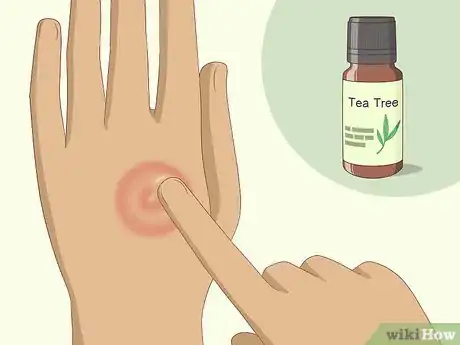
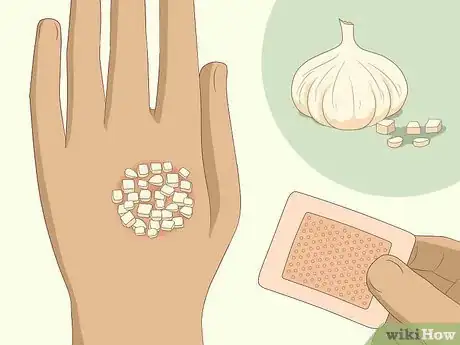
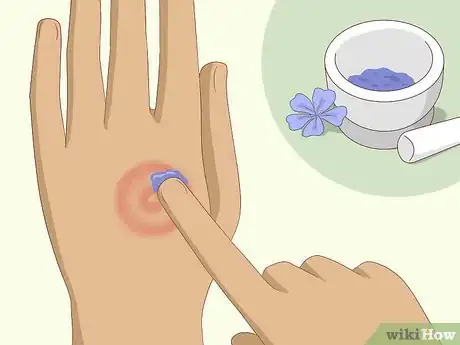
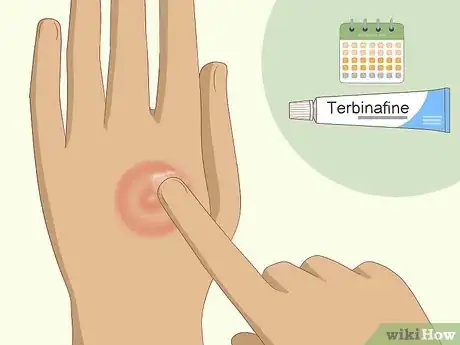
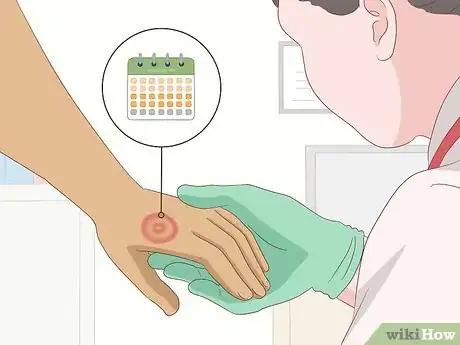
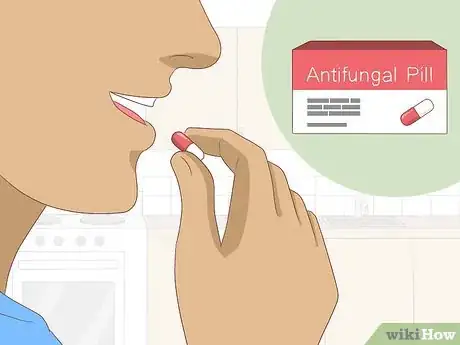
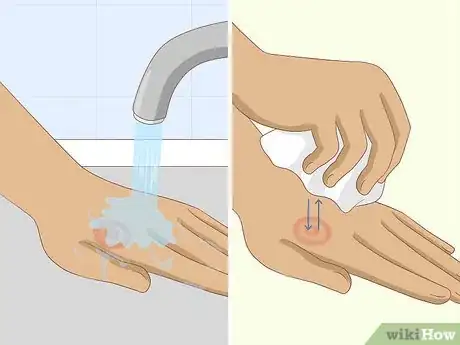
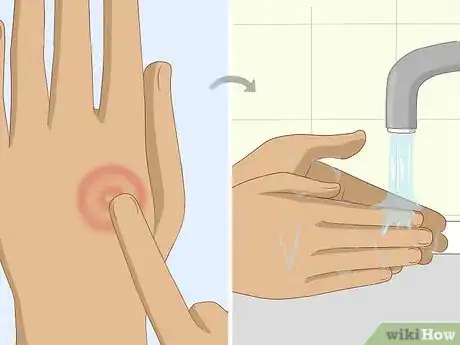
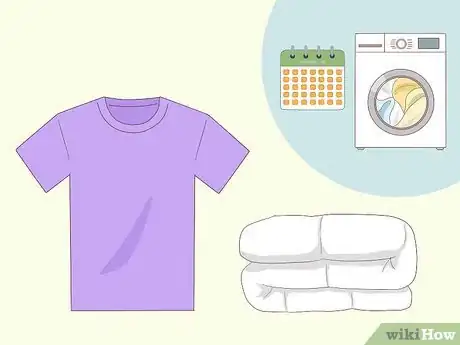
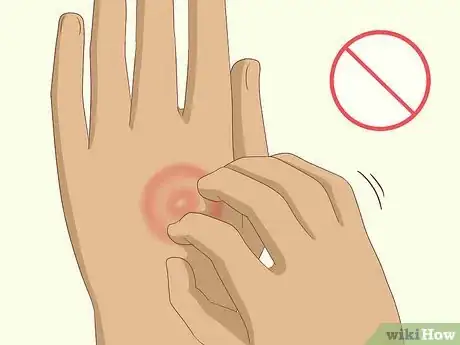
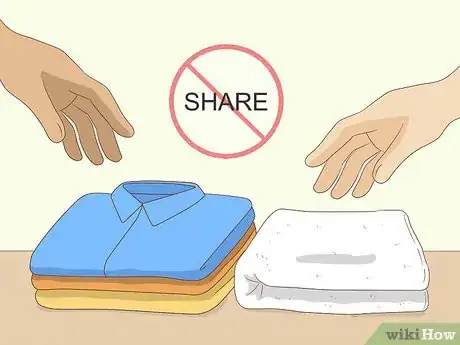




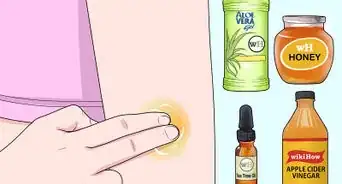
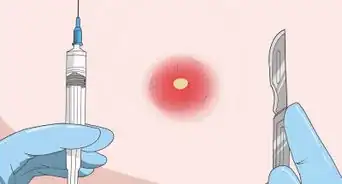
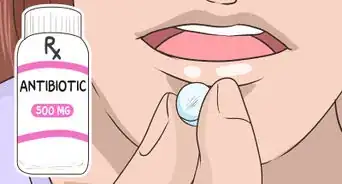

















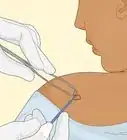
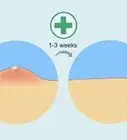
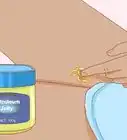



































Medical Disclaimer
The content of this article is not intended to be a substitute for professional medical advice, examination, diagnosis, or treatment. You should always contact your doctor or other qualified healthcare professional before starting, changing, or stopping any kind of health treatment.
Read More...